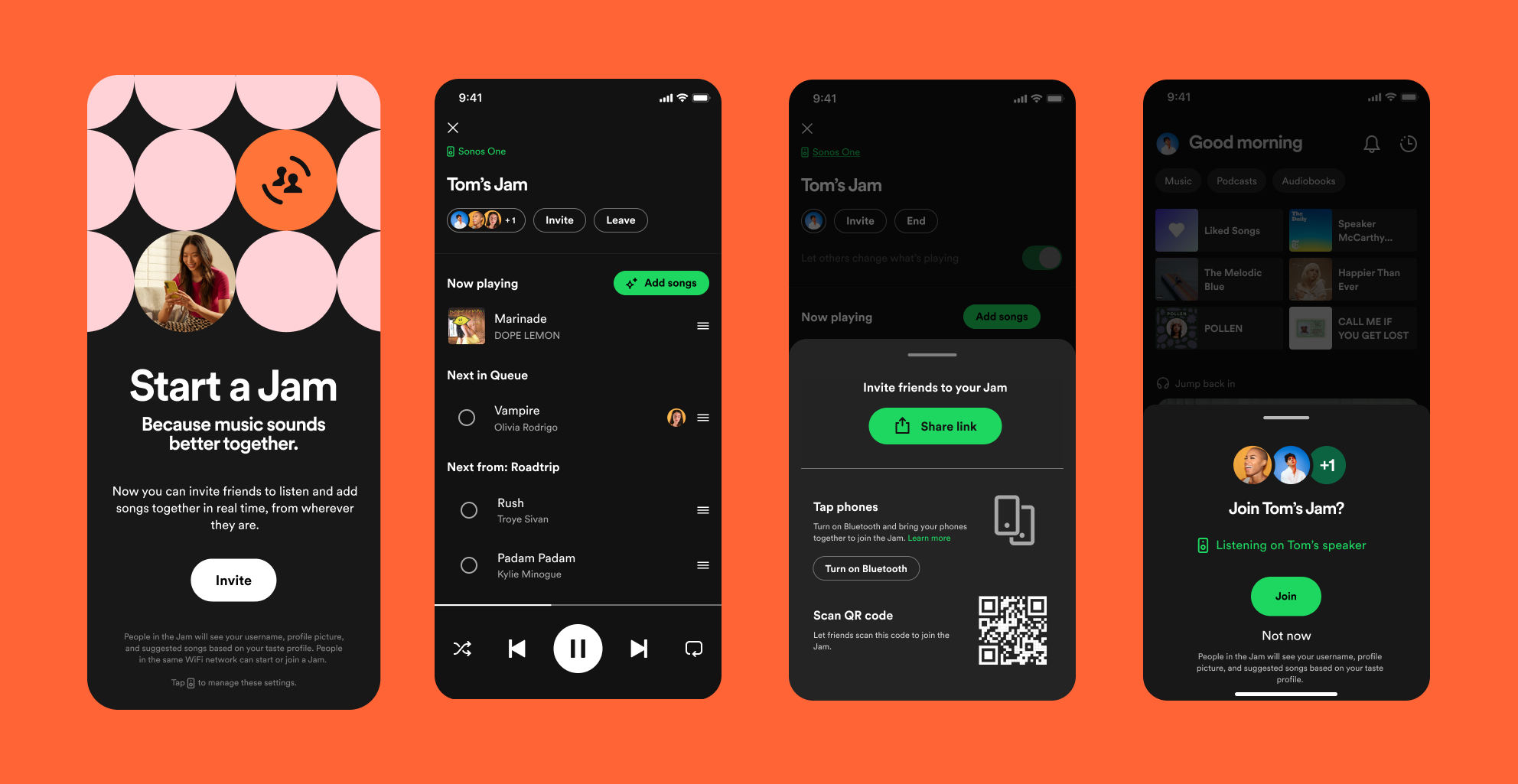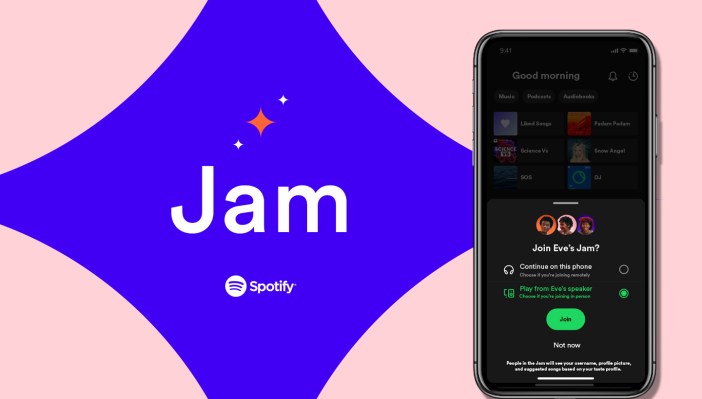Today Spotify is introducing its latest social feature, Jam, which allows multiple people to blend their own musical tastes into a combined playlist. However, the new feature, which builds on technology previously used in multiperson playlists like Blend and Duo Mix, is designed for real-time listening among a group of people — like at a party — where anyone can contribute to a shared queue of songs to play next.
Now, explains Spotify, instead of having one person in control of the music at a social gathering, everyone can have their say.
A new Jam can only be created by Spotify Premium subscribers, but any Spotify user, free or paid, can contribute. To get started, you’ll tap on the speaker icon at the bottom of your screen or the three-dot menu at the top, then select the new option “Start a Jam” from any song, album, or existing playlist. You can also control which device you want to play the tunes on, like your phone or, more likely, a speaker.
Anyone who’s on the same shared Wi-Fi network will be prompted to join the Jam when they open their Spotify app.
You can also directly invite users to contribute to the Jam by tapping your phones together with Bluetooth turned on, having a friend scan the QR code for the Jam from your phone, or by using the “share” feature to send a link over social media, iMessage, SMS and more.

Image Credits: Spotify
As people add to the shared queue, you’ll see profiles next to the track of those who’ve added the song in question. Up to 32 people can be in the Jam’s private session at the same time, Spotify told TechCrunch.
As the Jam’s host, you’re still largely in control of the music, by default, as you can determine who’s in the Jam, change the order of the tracks, or remove songs that you don’t want played. But Spotify does allow the host to enable “Guest controls” that let everyone remove songs or change the order of the tracks. Over time, the company says it expects to add more features to Jams, though it wouldn’t confirm if some sort of voting mechanism to move tracks up the list would be among them. (We can only hope!)
In addition to simply being a shared queue for group listening, Jam also brings Spotify’s personalization technology into the mix, which makes the feature unique.
Jam takes into account the listening preferences of the entire group to generate suggestions based on everyone’s tastes. This is the same technology that powers Blend — a popular addition to Spotify’s app that has now been used to create over 45 million personalized, blended playlists. In total, Spotify users have listened to over 200 million hours across all its collaborative playlists, with Gen Z listeners in the lead.
Spotify tells us that even if the people in the group have different musical tastes, the company has developed recommendation technology that can handle that problem. This involves a variety of different inputs and different signals, the company says, but the specifics are a part of Spotify’s secret sauce, so to speak, and vary based on the user and the shared session.
“We are able to create great personalized recommendations because of our dynamic systems that consider a wide variety of inputs such as what you’re listening to, which songs you’re adding to your playlists, how others with similar tastes listen, and more,” explains Bryan Roy, design director at Spotify. “And with Jam, we have improved our recommendations to allow for more real-time listening,” he says.
With Jam, Spotify is giving users another reason to subscribe and pay for the service, despite its recent price hikes. For now, the company is still doing well on the subscriber front, having reported 220 million subscribers in Q2 2023, up 17% year-over-year. However, it’s possible that the price increases could lead to more cancellations, though the company downplayed those concerns in its most recent quarter, assuring investors the price increase would have “minimal impacts” in Q3.
Jam is rolling out to all Spotify users globally on September 26.
The company is also rumored to be developing a hi-fi tier with lossless audio for $20 per month, compared with the $10.99 per individual user in the U.S.
